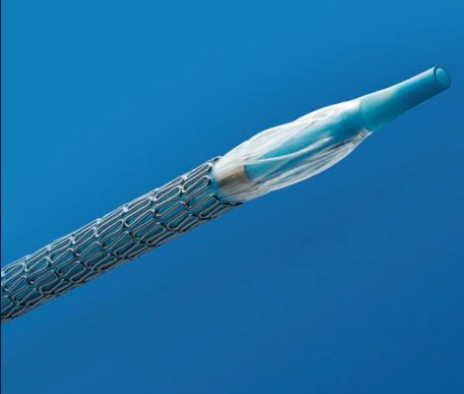Coronary stents are metal tubular devices that are affixed to the outside of a small balloon that is the size of about two to three millimeters in diameter. This whole stent/balloon device is passed into the coronary artery by way of effectively railing it over a wire that has been placed down one of the coronary arteries. At the site of the blockage in the coronary arteries the device is then inflated so that the balloon expands and the stent then therefore expands at the side of the blockage. This allows the stent to effectively crush the blockage or plaque out of the way and thereby smashing it into the wall of the artery. The balloon is then deflated and pulled out over a wire which thereby leaves the stent fully expanded and behind in the artery with it fully opposed to the wall of the artery. The stent has therefore treated the blockage by effectively smashing the plaque and cholesterol into the wall the artery and buttressing the artery open so that the stent has established the patency of the artery. The stent has a special drug coated polymer that prevents the artery from renarrowing.. Common companies producing stents are Boston Scientific, Medtronic, Abbot Laboratories
Medtronic Coronary Stent


